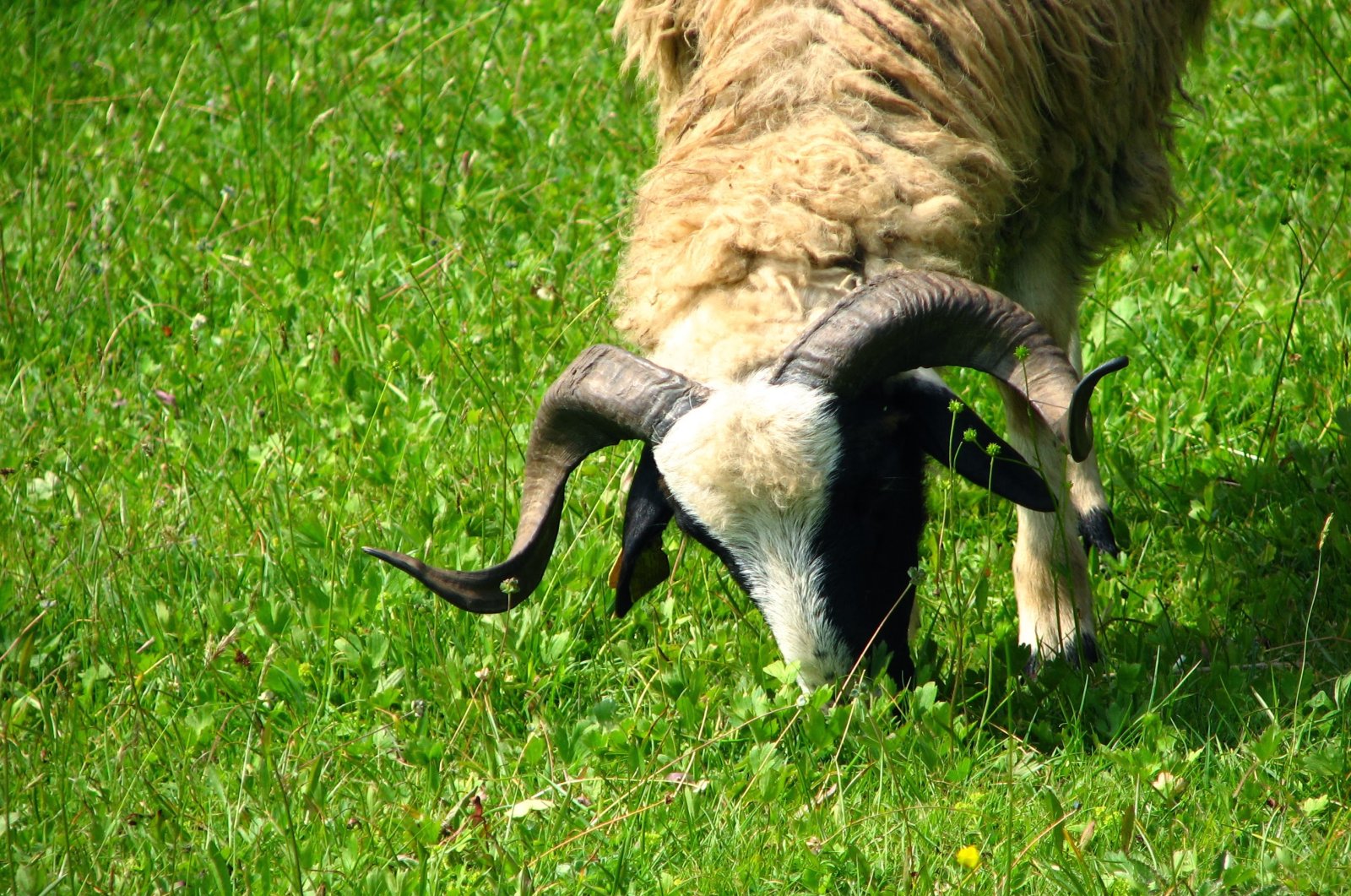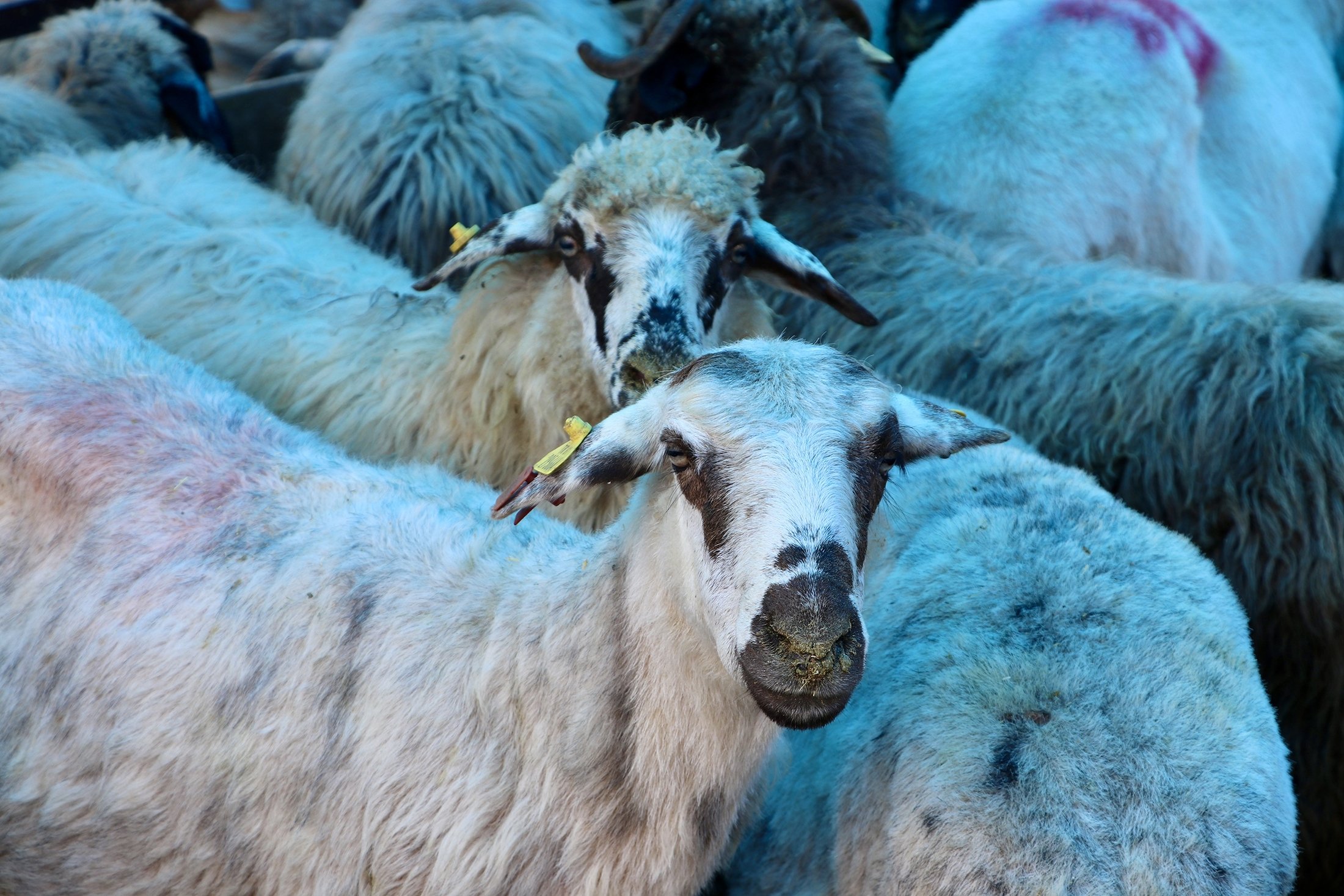
Eid al-Adha is a public holiday in addition to being a religious holiday in many Muslim-majority countries. Along with Eid al-Fitr, it is one of the two most important holidays in Islam and in Türkiye, it is celebrated with joy to the fullest
The holy days of Qurban Bayram, also known as Eid al-Adha, have arrived as they do every year, and all around Türkiye where it is also a public holiday, these days are celebrated with delight and jubilation against the backdrop of centuries of tradition and history.
Qurban Bayram, or the Feast of Sacrifice, is a religious holiday celebrated by Muslims for four days starting from the 10th day of Dhul-Hijjah according to the Hijri calendar. The 10th, 11th and 12th days of Dhul-Hijjah are called "Eyyam-ı nahr" (Days of Cutting) and the ninth day of Dhul-Hijjah, is called Arafah, all together marking the Qurban Bayram and also the time when the Islamic world performs the pilgrimage to Mecca every year.
"Sacrifice," as an Islamic religious term, means an animal that is slaughtered with the intention of getting closer to Allah and attaining the consent of Allah. Based on the story about the Prophet Abraham and his son Ismail in the Quran, the concept of sacrifice expresses a much more general devotion, the ability of the individual to sacrifice everything for Allah, surrender to Allah and be grateful to him.
Eid al-Adha is known by different names in different languages and cultures, with cultural influences. It is a common name all over the world, which is read as Eid al-Adha in Arabic. While it is called Qurban Bayram in Turkish, the feast is often called Bakra Eid in India and Pakistan, which means "Goat Feast" – due to the animal that is often sacrificed in these countries being the goat.

In Türkiye, the Eid prayer is performed 45 minutes after sunrise on the morning of the first day of Eid. Mosques are almost overflowing, children and men of all ages come together for prayer and the whole congregation celebrates after the prayer.
In some regions, men leave the house by eating dessert before going to prayer, while in some places, the first meal is eaten when the sacrifice is cut and the meat is cooked.
Sacrifices are usually slaughtered on the first day. The resulting meat is divided into three equal parts; one-third is distributed to the relatives of the sacrificer, and one-third to the poor. The remaining one-third goes to their family.
Meals made from the meat of the sacrifice are served to guests during the bayram. Acquaintances and relatives are visited, and pocket money, sweets and gifts are given to children.
Another important tradition of Qurban Bayram is Eid visits. Family members, relatives, neighbors and friends visit each other. Those who are offended make peace, those who are far away come close and meet and people reconnect.
The elder people's hands are kissed, and the younger ones are given pocket money or small gifts. Refreshments are also very appetizing during the visits, various dishes, salads, desserts, cookies, fruits and holiday candies are offered to the guests.
The special dishes of the feast also occupy an important place in Turkish cuisine.
Meat dishes are usually one of the main focuses of Qurban Bayram, as expected. Various dishes are made with the meat obtained from sacrificed animals, including delicious dishes such as tripe soup, roasting, kebab varieties and rice.
Families usually invite their relatives and gather around a large table and share these delicacies.
Turkish society also maintains the tradition of helping those in need and giving alms in accordance with the spirit of Eid al-Adha. During the feast, the rich give alms to help the poor and try to make the needy happy. This is a tradition that reinforces mutual solidarity and assistance.
Centuries-old traditions
In the Ottoman Empire, various traditions and rituals were practiced during Qurban Bayram.
The sacrifice of the sultan: In the Ottoman Empire, Qurban Bayram was celebrated with a ceremony presided over by the sultan. On the first day of the feast, the sultan would sacrifice an animal in a large crowd in the courtyard of the palace. This segment signified sovereignty and wealth. The meat of the sacrificed animal was distributed to the authorities in the palace and to those in need.
Sacrifice in mosques: Mosques played an important role in Eid al-Adha in Ottoman society. On the first day of the feast, special areas were created in the courtyards of the mosque or in its immediate vicinity, and the sacrifices were slaughtered and their meat was distributed to prisoners.
Giving alms: Eid al-Adha in the Ottoman Empire was a time when giving and sharing alms was important. The rich gave alms to help the poor and needy. These alms were usually in the form of meat and other aids obtained from the meat of the sacrifice. The aim was to increase solidarity in society and to make the less able ones happy.
Giving thanks and approval: The sacrifice is intended for Muslims to thank Allah and gain approval. The sacrificed animal is considered a blessing and is an expression of gratitude and appreciation to Allah.
The sacrifice is seen as a form of worship and social responsibility in Islam. Thanks to this tradition, Muslims try to keep alive their faith in Allah, the values of making sacrifices and the traditions of helping the needy.
